Customer Service Outsourcing: A Call Away From Success
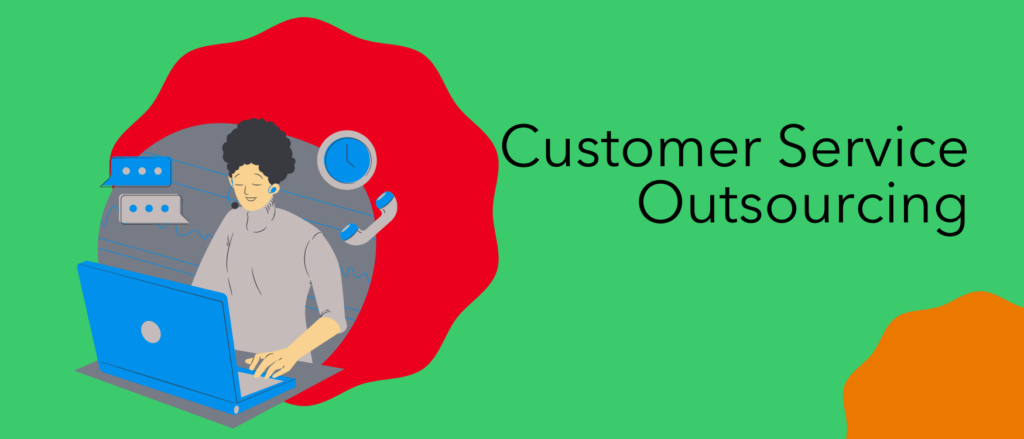
If you are looking for a way to improve your company’s performance, customer service outsourcing is the ace under your sleeve!
As a company owner, all the decisions you make can have a significant impact on consumer behavior. And, ultimately, your company’s profits. That’s why it’s so vital to offer good customer service at every stage of the customer experience. Be ready to build a customer support team!
Stay tuned to get the best tips for successful customer service outsourcing and avoid bad customer service!
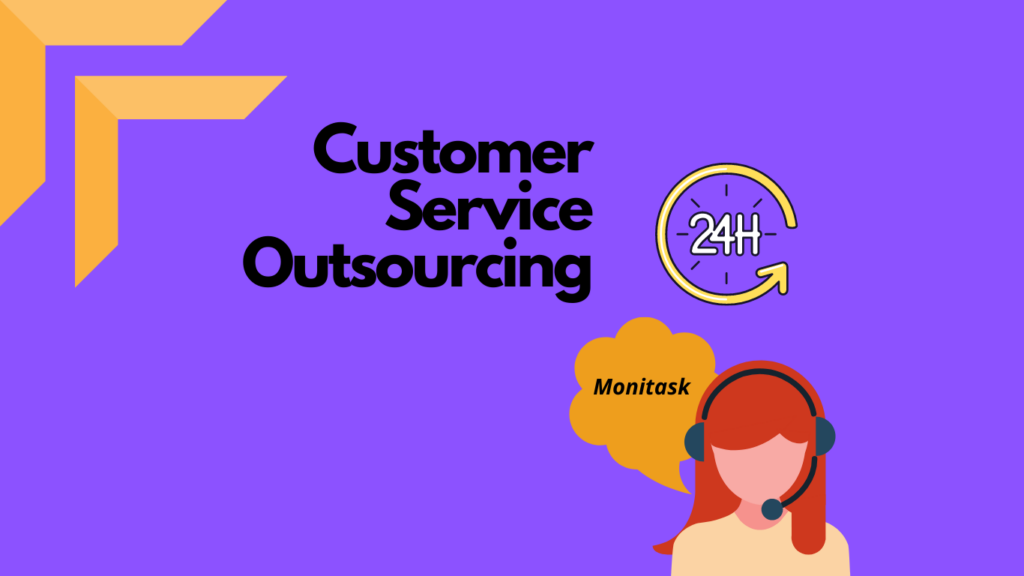
We could think customer service professionals started not a while ago. But actually, it has been around for a long time.
In the early days of civilization, people bartered goods and services. This was the only form of trade until the money came along. By 3000 BC, people were conducting waterborne trade missions and by 1000 BC, merchants were becoming a part of civilizations.
And of course, by then there were already suggestions about how to provide great customer service! The butcher, the baker, and the local perfume maker had to fulfill demands to have satisfied customers with bespoke goods as well as fledgling marketing methods to ensure customer happiness.
One thing hasn’t changed over time: we want to improve customer experience and offer existing customers excellent service.
Otherwise, a bad review will be forever plastered on your company’s reputation, just like happened to someone named Ea-Nasir around 1750BC in Ancient Babylon.
He sent to another someone called Nanni, a shipment of copper ore of an inferior grade, after some annoying delay and on top of that, in a damaged condition. And, of course, Nanni profusely complained and sent him a ticket! Actually, a clay, but you get the meaning.

Yes, you are looking at the first-ever customer service complaint in recorded history, which resides in the British Museum! As no one wants to be in Ea-Nasir shoes, business owners started to focus on supporting customers.
Customer Service Evolution: The Telephone,
The Switchboard, and The Internet
With the creation of money, people could now buy and sell goods and services more easily. This led to the rise of the business practice, which required good customer service to deal with one frustrated customer, complaints, returns, and other issues.
The Telephone
In 1876, when Alexander Graham Bell patented the telephone, it was still a novelty. By 1914, there were more than 1 million phones in use in the United States.
As this gadget allowed for two-way communication, it was a game-changer as businesses could now respond to customer inquiries in real-time.
Although this was a new technology, it required new skills from customer service representatives, such as the ability to handle calls quickly and efficiently.
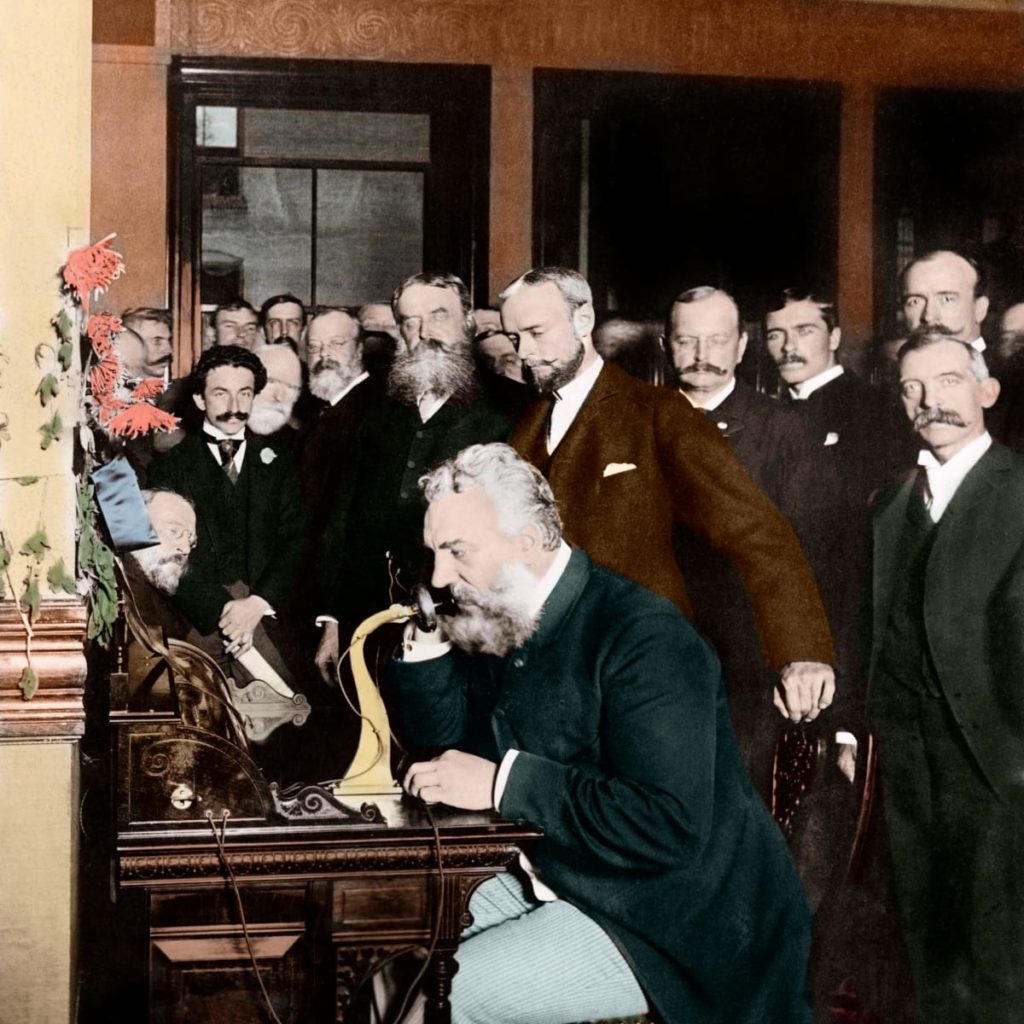
It also allowed businesses to expand their reach beyond their local area. With the help of the telephone, businesses could now provide customer support to people all over the world.
The Switchboard
A telephone switchboard is a device that allows different parts of a phone system to communicate with one another to establish a call.

Modern switchboards are generally controlled by a set of automated algorithms that connect and route phone calls without the need for a person. This gadget significantly improved customer service levels, save money and lighten the burden on-call operators.
The Internet
The next big change in customer service came with the advent of the internet. It has given customers more power and made it easier for them to find information about the products they want to buy and the companies they might want to do business with.
The rise of social media has had a big impact on customer service as well. Customers can now reach out to companies through Twitter, Facebook, and other platforms to ask questions, receive technical support, give feedback, and make complaints.

For example, according to Oberlo, 2018 71% of customers who engaged in a positive experience with a brand on social media are likely to recommend the brand to their friends and family.
- This has made it more important than ever for businesses to have a good customer service strategy in place, and outsourcing customer service is one of them.
Certainly, customer service has come a long way. Just look at the timeline below!
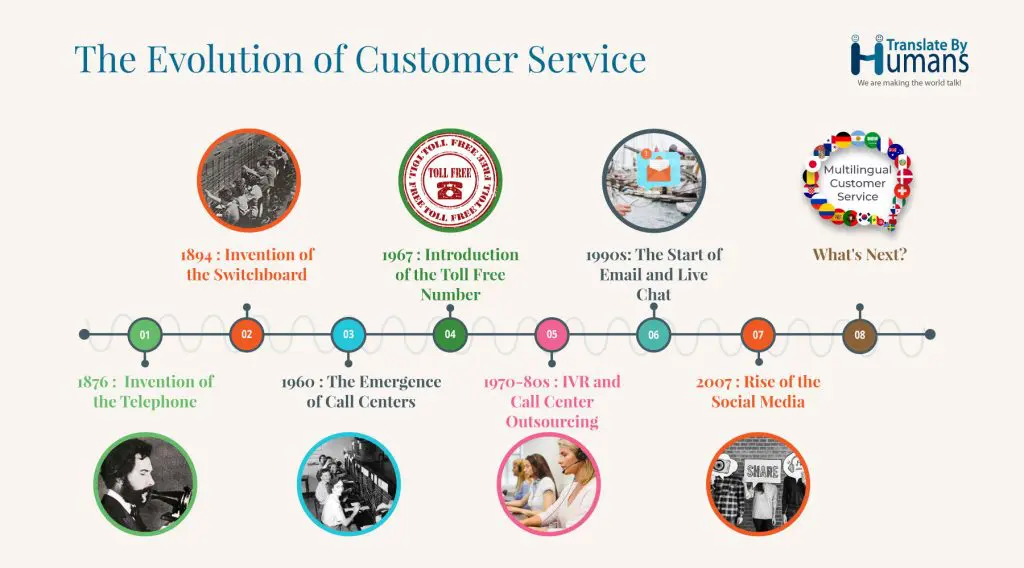
Now that we went over the tiny history lesson, let’s dive into the 101 basics of customer service outsourcing!
What is Customer Service?
“Customer service is the provision of service to customers before, during, and after a purchase.”
Yes, customer service is a journey, not a fixed point!
Customer service can be defined as the entirety of activities – both proactive and reactive – that a company takes to ensure its customers are satisfied. This ranges from answering customer queries and complaints to providing product support and handling returns.
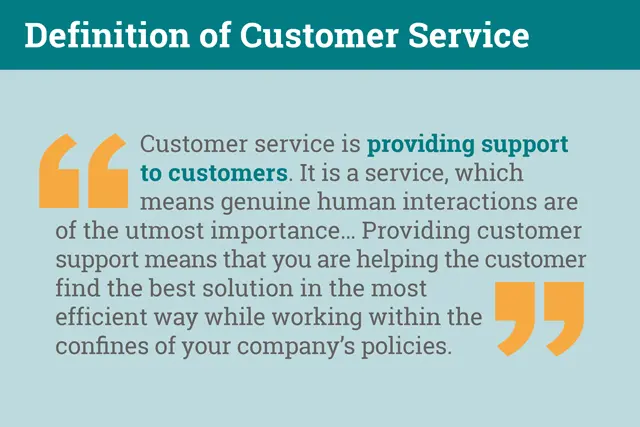
Proactive customer service activities are those that are planned in advance, while reactive customer service activities refer to those that are undertaken in response to customer feedback or inquiries.
You may think your company is too small to even have a customer support team, or that you can settle an internal team, but we encourage you to think twice.
- According to the Harvard Business Review, 80% of companies use customer satisfaction scores to analyze customer experience and improve it.
- According to Microsoft, 95% of consumers say customer service is key to their brand loyalty. Remember that customers are far more risk-averse than vendors, if you don’t meet their expectations, they will leave. In the United States alone, companies lose nearly $75 billion in revenue due to poor customer service.
Still, if you are not convinced, Jeff Bezos, CEO, and Founder of Amazon, owner of the Washington Post, and #1 on the Forbes list give you the last push, as he is obsessed with providing excellent customer service!
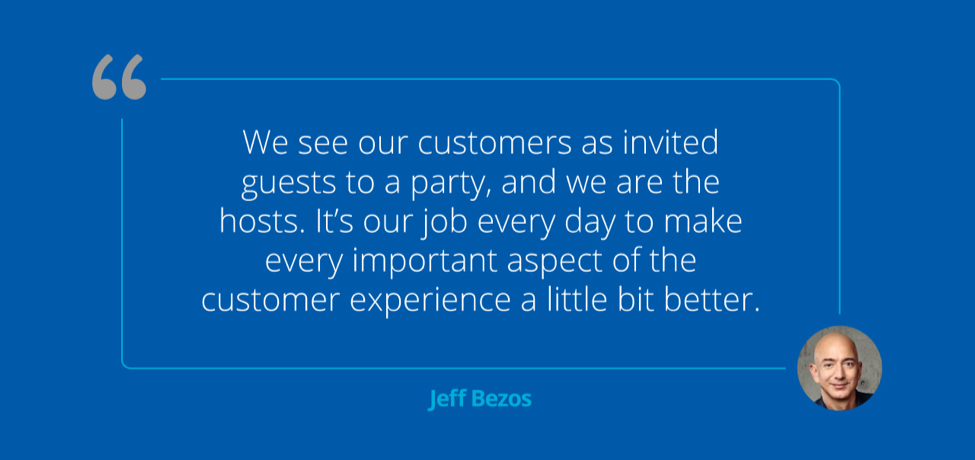
What Is Outsource Customer Service?
Customer service outsourcing is the process of contracting a third-party company to handle customer service on your behalf. This can include activities such as answering customer inquiries, handling returns, providing product support, and more.
Outsourcing your customer service can be a great way to improve customer satisfaction levels, as it allows you to tap into the expertise of experienced customer service professionals!
Customer Service Outsourcing: The Old and the New
The outsourcing of customer service is not a new concept. In fact, it has been around for quite some time. In the early days of outsourcing, large companies would hire third-party call centers to handle their customer service needs.
This allowed these businesses to focus on their core competencies, technical skills, all while saving them the cost of training and managing in-house customer service representatives.
Over the years, as technology advanced, so did outsourcing customer support. Companies began to outsource their email and chat support to third-party providers.
And today, with the advent of artificial intelligence (AI), businesses are beginning to outsource even more complex tasks, like social media monitoring and sentiment analysis.
Why Customer Service Outsourcing?
According to a report by Datamonitor, the global customer service outsourcing market was worth an estimated $130 billion in 2016 and is expected to grow to $335 billion by 2025. This growth is being driven by businesses of all sizes looking for ways to save money and improve customer satisfaction.
Hence, in today’s competitive landscape, it’s more important than ever for your business to provide excellent customer service if your want to keep your competitive advantage.
When you outsource your customer service:
- You’re able to tap into the expertise of experienced customer service professionals who can provide your customers with the high-quality support they need and deserve.
- Also allows you to free up your internal team to focus on more strategic tasks, like developing new products and marketing campaigns.
- Develop your competitiveness, according to Forrester, outsourcing customer service can improve your competitiveness by up to 20%.
- And last but not least, outsourcing can save you money in the long run, as it’s often more cost-effective to outsource customer service than to handle it internally.
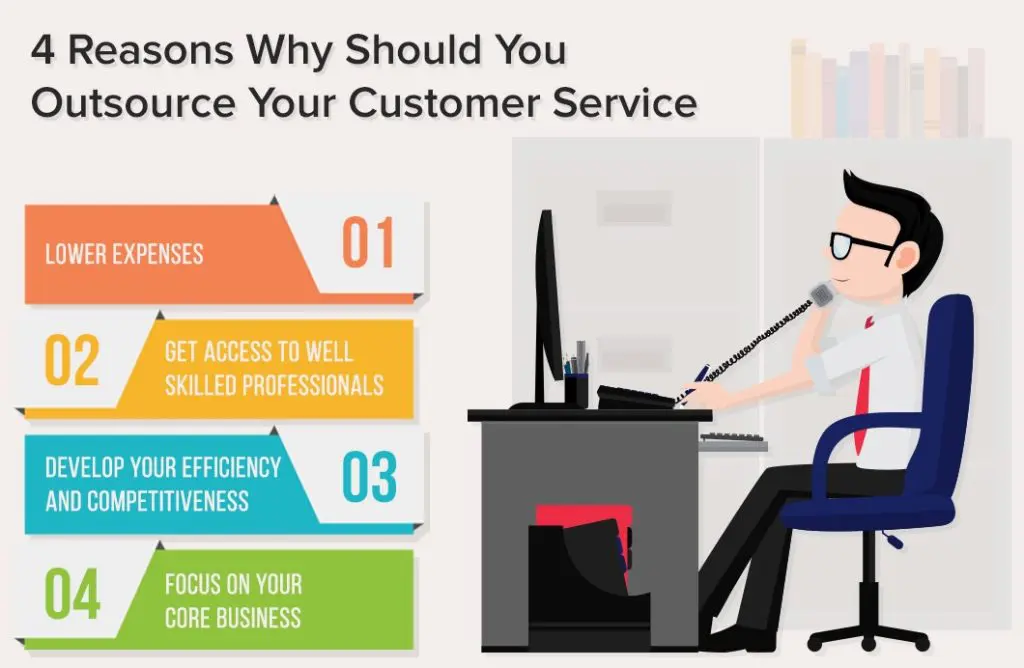
What Are the Types of Outsourcing Customer Service?
Above, we briefly mentioned these two main types of customer service outsourcing: proactive and reactive. Let’s review them in detail.
Proactive Customer Service
Defined as any customer service activity that is planned in advance. This can include activities like creating FAQs, developing self-service support, or offering live chat support on your website.
A great example of proactive customer service is when Adobe had an outage due to an issue with Amazon Web Services- They posted a tweet about it before they started getting customer complaints! The tweet contained a gif of a puppy stampede to lighten the mood.
Reactive Customer Service
On the other hand, refers to any customer service activity that is undertaken in response to customer feedback or inquiries. This can include activities like handling customer complaints, responding to customer emails, or providing product support over the phone.
An example of reactive customer service is when a client might submit an e-mail or call the customer care line and be told that an agent will “look into the situation” and/or will provide “feedback within X days.”
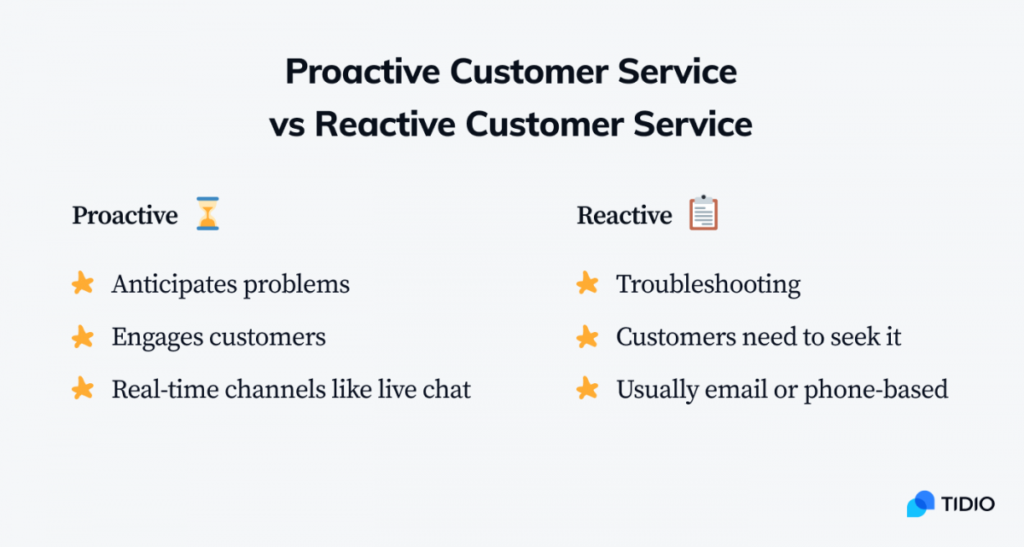
Which type of outsourcing customer service is right for your business? The type you choose will depend on the unique needs and goals of your company, or most importantly what kind of company you want to have.
What Are the Pros and Cons of Outsourcing Customer Service?
Of course, no business decision is without its risks, and outsourcing customer service is no exception. There are pros and cons to why businesses might choose to outsource their customer service.
Some of the most common pros include:
- Improved Customer Satisfaction: When you outsource customer service, you can be sure that your customers will always receive the highest level of service possible. This is because customer service providers are experts at dealing with customer inquiries and concerns.
- Cost Savings: Outsourcing customer service can help you save money on labor costs. This is because you won’t need to hire additional staff to handle customer service operations.
- Flexibility: When you outsource customer service, you’ll have the flexibility to scale up or down as needed. This means that you can increase or decrease the number of customer service agents you have based on your current needs.
- Increased Efficiency: Outsourced customer service can help you improve your overall efficiency. This is because customer service providers are experts at dealing with customer inquiries and concerns. They also have access to the latest tools and technology, which can help them resolve issues more quickly.
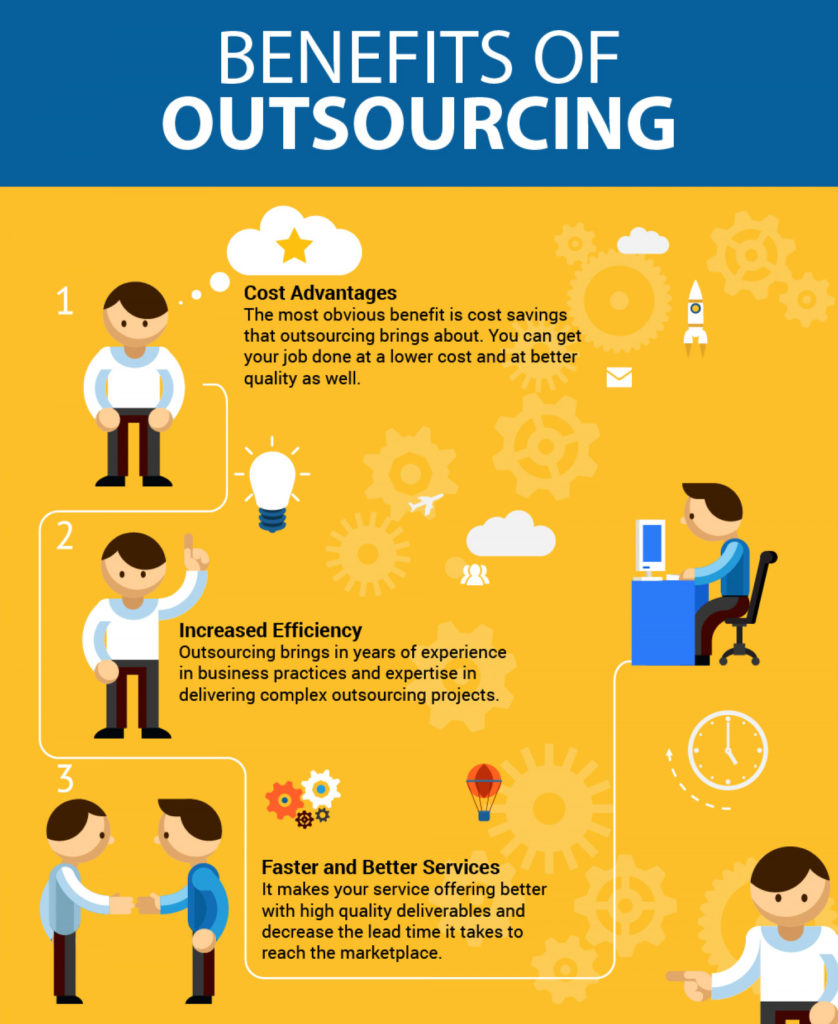
Some of the most common prons include:
- Lost some control over the customer experience: Since you’re relying on a third-party company to handle your client support, you’re at the mercy of their capabilities and expertise. If they’re not up to par, it could lead to a decline in customer satisfaction levels and even lost revenue.
- Unexpected Costs: Unexpected costs can often arise when you outsource customer care. For example, you may need to pay for training for your customer service agents. Or, you may need to pay for extra support during peak times.
- Language Barriers: If you outsource customer service to a country where English is not the primary language, there is a chance that customers will not be able to communicate with your customer support team easily.
- Time to Integrate: It can often take several months to integrate a third-party customer service provider into your organization. This is because they need to be familiar with your products, your policies, and your procedures.
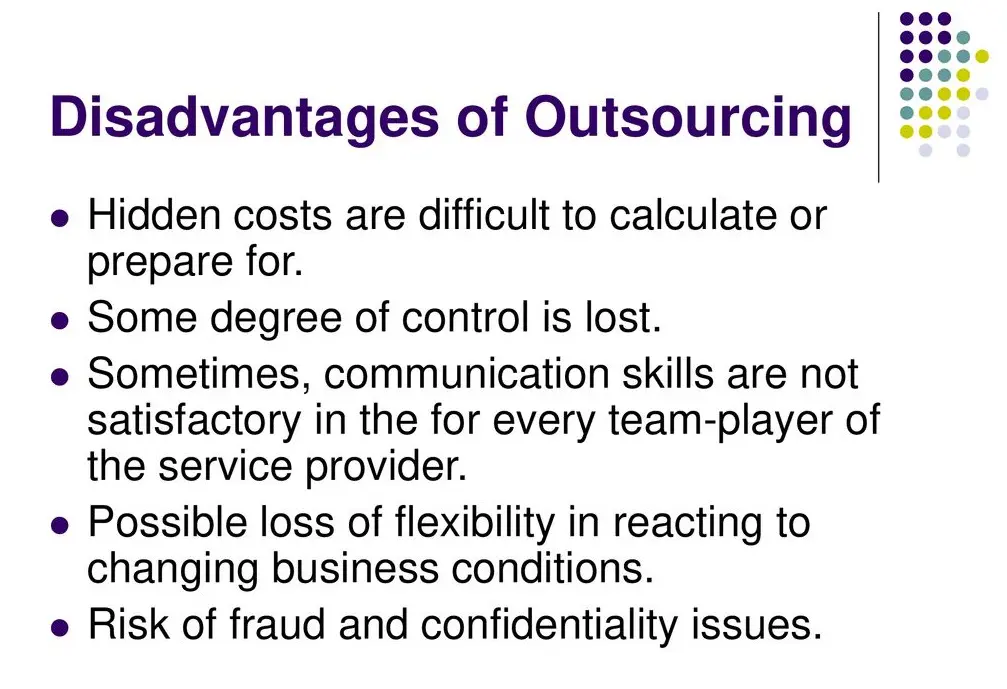
BEWARE! Cultural differences can sometimes lead to misunderstandings. It is important to do your research during the business process outsourcing and choose a customer service company that you feel confident will be able to understand and meet the needs of your customers.
Consider that when done correctly, customer service outsourcing can be a great way to improve your company’s bottom line.
Now, we keep talking about how outsourcing your good customer service helps you save money in the long run.
But, how much money is involved in outsourcing?
How Do You Calculate Outsourcing Costs?
A few different factors will affect the cost of outsourcing customer service, such as:
- The size of your company
- The type of customer service you need
- The location of the customer service provider
Let’s put this scenario in perspective with some numbers!
The average salary for a customer service agent in the United States is $32,890 per year, or about $16 an hour. This means that you could potentially save 50% or more on labor expenses by outsourcing your customer service.
However, this price can vary depending on the location and the type of customer service you need.
If you’re looking for a lower-cost option, you can outsource your customer service to a provider in India or the Philippines. These countries offer client service services at a fraction of the cost of providers in North America or Europe.
On the other hand, you can hire local outsourcing customer service in the United States or Canada. You may consider being willing to pay a bit more for this provider.
When it comes to client service, you often get what you pay for. It’s important to do your research and make sure you select a company that has a proven track record of providing quality services.
Cost Analysis for Outsourced Customer Service
As we stated before, the cost of outsourcing customer service will be lower than the cost of hiring in-house customer service staff.
It is important to note that the cost savings associated with outsourcing customer service may not be immediate. It can often take several months to integrate a third-party client service provider into your organization. However, over time, you should see a significant decrease in your overall labor costs.
An accurate cost analysis will help you determine whether the financial case weighs in favor of keeping a process in-house or outsourcing it instead to a specialist provider.
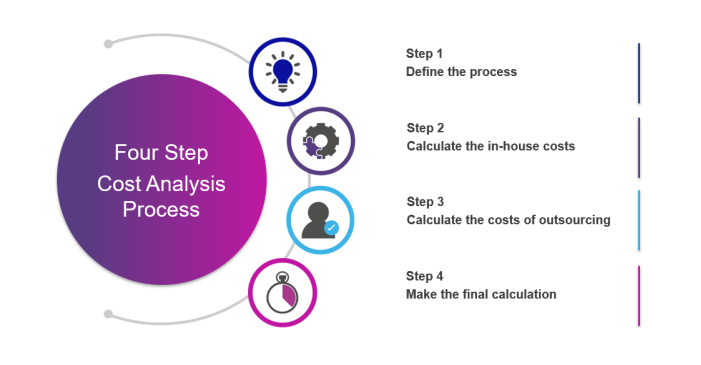
In general, the cost of outsourcing customer service will be less than the cost of hiring and training in-house staff. If you were to outsource customer service for a team of five agents, it would cost you around $80,000 per year.
Now, let’s say you wanted to hire and train those same five client service representatives in-house. The cost of salaries, benefits, and training would likely be closer to $100,000 per year.
The best way to get an accurate estimate of how much it will cost to outsource your customer service is to request quotes from several different providers.
Different Ways to Outsource Customer Service
There are a few different ways that you can outsource your customer service. The most common option is to hire a full-time equivalent (FTE) agent.
An FTE is a Customer Service Representative
This agent works for your company on a full-time basis. This means they would be dedicated to handling client service inquiries for your business.
A big advantage of hiring an FTE is that they will become familiar with your company’s products, services, and procedures. This knowledge can be helpful in resolving client issues quickly and efficiently.
Another advantage of an FTE is that they are usually based in the same country as your clients. This can help to build trust and rapport with your customers, as they will be able to communicate with them in their native language.
Contact Center
Another option for outsourcing customer service is to use a contact center. A contact center is a third-party provider that offers a variety of client services, such as phone support, email support, and live chat.
This option can be helpful! Especially if you need assistance with overflow call volume or if you want to provide 24/7 client support.
One thing to keep in mind is that contact centers may not be familiar with your products or services. This can lead to longer wait times for customers and more unresolved queries.
Pay Per Performance
This customer service provider is paid a flat fee for each ticket that they resolve. This type of arrangement can be helpful if you have a low call volume. Also, if you want to outsource only specific aspects of your customer service operation.
Keep in mind that pay-per-performance providers may not have the same level of expertise as full-time agents. As a result, you may see an increase in the number of tickets that are unresolved.
As your business expands or changes, outsourcing your customer service must be a key element of your business plan.
Pillars of Good Customer Service By Upwork
One thing is clear: no matter if your customer service is in-house or outsourced, the main goal is to keep your clients satisfied.
You may have a fantastic product, but bad customer service will break you. People will hear about it and abandon your business if your customer service is unhelpful, unreliable, or simply difficult to reach.

Excellent customer service entails following best practices such as valuing customers’ time, having a pleasant demeanor, and being helpful with knowledge and resources.
Yet it also implies going above and beyond to exceed rather than just meet expectations.
Upwork offers some great insight on great customer service, follow this guideline to win new customers and keep the existing ones!
Bottom Line
There are a few things to keep in mind if you’re considering outsourcing customer service. First, it’s important to make sure that you select a reputable company with a proven track record.
Second, you’ll need to decide how much you’re willing to spend on customer service operations. Finally, you’ll need to determine what level of service you expect from your provider.
In short, companies outsource because:
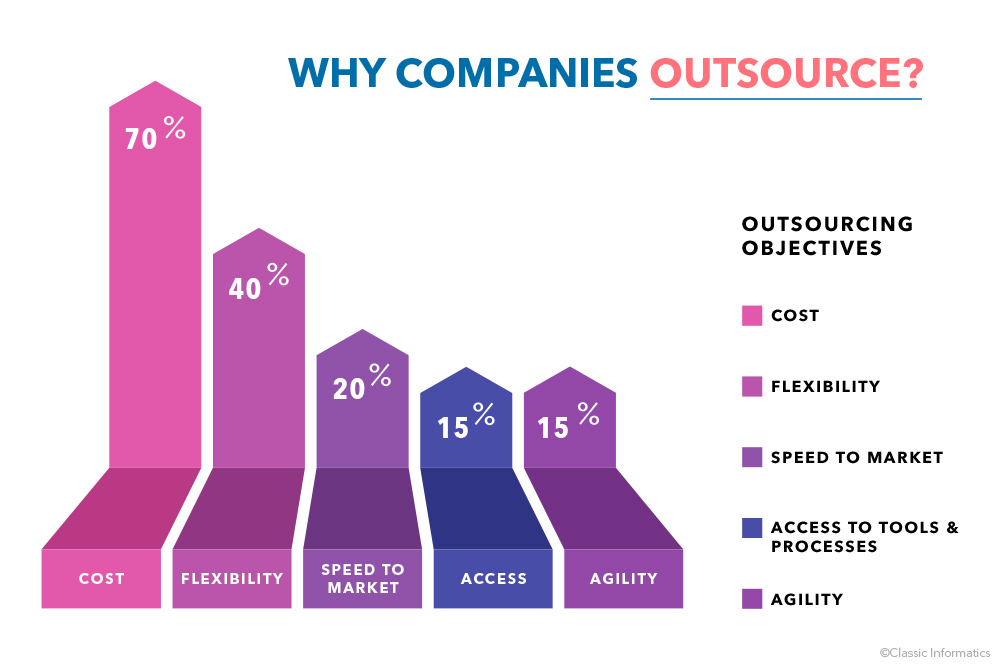
Have you ever considered hiring outsourcing services to improve your customer service performance? If not, we encourage you to do so! When in doubt, you can always come back to this post and clear your mind!
Frequently Asked Questions
Should You Outsource Customer Service?
Yes, if done correctly, customer service outsourcing can be a great way to improve your company’s bottom line. There are some disadvantages to consider before making the decision to outsource, such as language barriers, cultural differences, and the difficulty of building a long-term relationship with an external company.
How to Choose the Best Customer Support Outsourcing Service?
First, you will need to decide how much you’re willing to spend on customer service operations and what level of service you expect from your provider.
You should also consider the company’s reputation, experience, and the company’s Better Business Bureau rating and reviews, as well as online testimonials. You should also consider the length of time the company has been in business and their experience with similar businesses.
How to Know When to Hire International or Offshore Outsourcing?
That is a difficult question to answer. It really depends on the company and what their needs are. Domestic outsourcing can be more expensive, but you have a better chance of building a long-term relationship with the provider.
International outsourcing can be less expensive, but there are language and cultural barriers that need to be taken into account.


